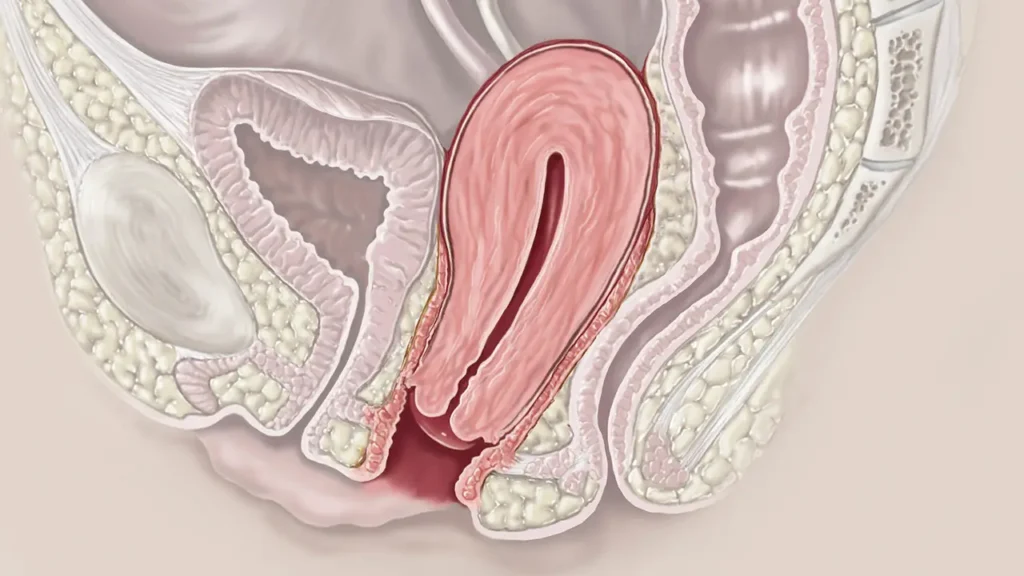Uterine Prolapse Surgery
Uterine prolapse is frequently diagnosed during a pelvic exam. Your healthcare professional might ask you the following during the pelvic exam:
As though having a bowel movement, bear down. This can assist the physician in determining the extent to which the uterus has slid into the vagina.
Your pelvic muscles should contract as though you are halting a pee stream. This exam evaluates the pelvic muscles’ strength.
Another option is to complete a questionnaire. This aids in your provider’s evaluation of the impact of uterine prolapse on your life. Treatment decisions are guided by this knowledge.
If you experience significant incontinence, testing to assess bladder function may be necessary. We refer to this as urodynamic testing.

What’s Uterine Prolapse?
Uterine prolapse occurs when the pelvic muscles and apkins that support the uterus come weakened or stretched, causing the uterus to slip down into or out of the vaginal conduit. This condition can lead to colorful symptoms, including pelvic pressure, urinary incontinence, and discomfort.
Diagnosing Uterine Prolapse
1. Pelvic test
During a pelvic test, your healthcare professional will assess the extent of uterine prolapse through the following styles
Bearing Down
Procedure You may be asked to bear down as though having a bowel movement.
Purpose This initiative helps the croaker determine how far the uterus has descended into the vaginal conduit and assess the degree of prolapse.
Pelvic Muscle compression
Procedure You may be asked to contract your pelvic muscles as though trying to stop the inflow of urine.
Purpose This test evaluates the strength and functionality of your pelvic muscles, furnishing sapience into their capability to support the uterus.
Questionnaire
Purpose Completing a questionnaire helps your provider understand how uterine prolapse affects your diurnal life, symptoms, and overall well– being.
Benefit This information is essential for guiding treatment opinions and addressing the impact of the condition on your quality of life.
2. fresh Testing( if necessary)
Urodynamic Testing
Purpose If you witness significant urinary incontinence, urodynamic testing may be performed to assess bladder function and how well your bladder holds and releases urine.
Procedure This test evaluates bladder pressure, capacity, and function, furnishing precious information for diagnosing and managing urinary symptoms associated with uterine prolapse.
Treatment Options
Based on the severity of the prolapse and your symptoms, your healthcare provider will discuss various treatment options, including:
- Conservative Management: Lifestyle changes, pelvic floor exercises, and physical therapy to strengthen pelvic muscles and support the uterus.
- Pessary Use: A device inserted into the vagina to support the uterus and alleviate symptoms.
- Surgical Options: Procedures to repair the pelvic support tissues and restore the uterus to its proper position, which may be considered for more severe cases or when conservative measures are insufficient.
Why Choose Gandhi Nursing Home?
At Gandhi Nursing Home, we are dedicated to providing expert care for uterine prolapse with a focus on:
- Experienced Specialists: Our healthcare professionals are skilled in diagnosing and treating uterine prolapse, offering personalized care tailored to your needs.
- Comprehensive Evaluation: We use thorough diagnostic procedures to accurately assess the extent of uterine prolapse and its impact on your health.
- Patient-Centered Approach: We prioritize your comfort and well-being, providing compassionate care and support throughout your treatment journey.

